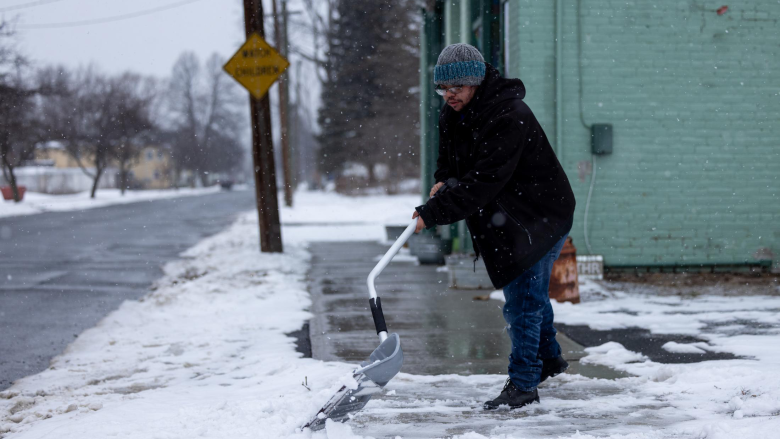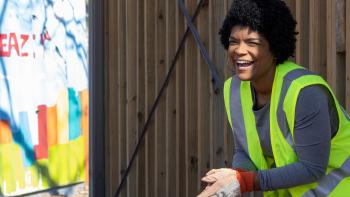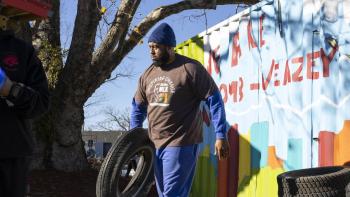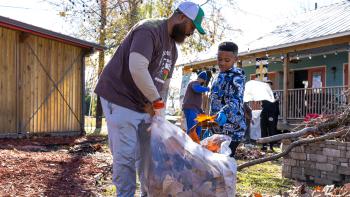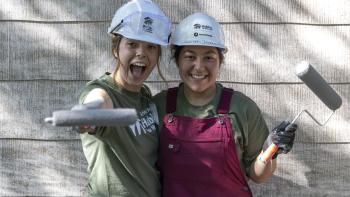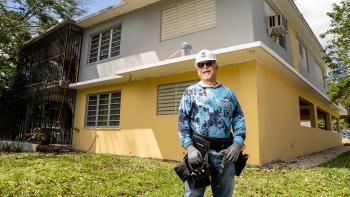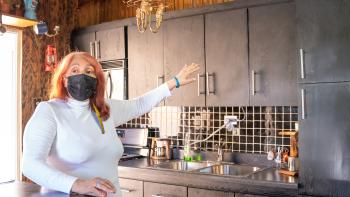Habitat and residents forge legacy of change in Massachusetts community
Central Berkshire Habitat for Humanity is partnering with residents and local organizations to improve the quality of life in a historically marginalized neighborhood in Massachusetts. Learn how listening to residents, hiring them, and centering their voices has been key to driving improvements.
Central Berkshire Habitat for Humanity is partnering with residents and local organizations to improve the quality of life in Westside, a historically marginalized and disinvested neighborhood in Pittsfield, Massachusetts. Westside faces high unemployment, low homeownership rates, an aging housing stock and a lack of communal green spaces.
In 2009, Central Berkshire Habitat engaged residents and partners to jointly implement a holistic, community-centered neighborhood revitalization approach to spark changes in the community. Carolyn Valli, Central Berkshire Habitat’s CEO, says listening to residents, hiring them, and centering their hopes and dreams for the neighborhood has been key to driving improvements.
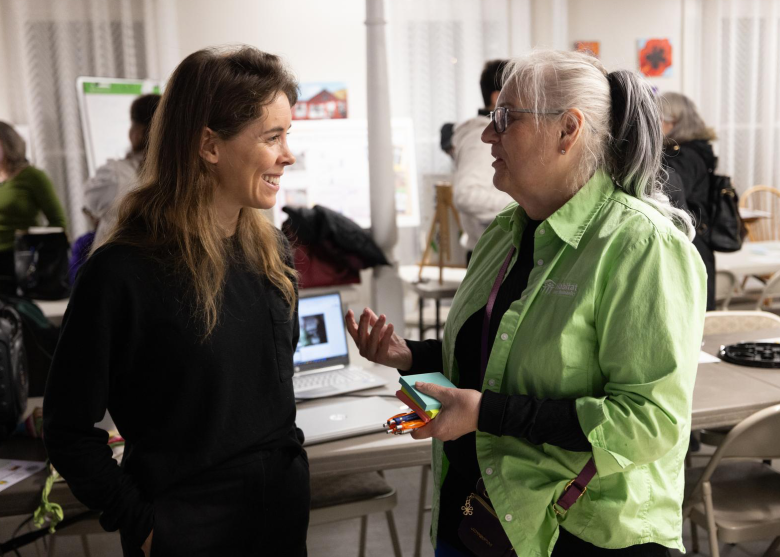
Central Berkshire Habitat CEO Carolyn Valli, right, with architect and Pittsfield resident Tessa Kelly.
“Residents are at the table. They are not an afterthought. They play a major part in making decisions and finding solutions.”— Carolyn Valli, Central Berkshire Habitat’s CEO
The Habitat-led coalition of residents and local partners have come together to:
- Create a workforce development program that trains future homebuilders.
- Build more affordable, decent homes and encourage other affordable home developers to invest and build in the neighborhood.
- Improve public safety by expanding the hours that social workers are on call to support police calls.
- Develop new parks and improve existing parks.
- Advocate successfully for new, safe sidewalks.
- Create murals that reflect the residents’ vision for the future of their community.
Connecting residents to resources
After hearing from residents that community members struggle to connect with local services, Central Berkshire Habitat hired two community navigators, local people with lived experience and cultural responsiveness who can help residents understand and navigate complex systems to reduce barriers to access. Community navigators and residents partnered to find affordable housing options and access food assistance and mental health resources.
Central Berkshire Habitat built on the immediate success of the model and hired additional community navigators. Now, six full-time community navigators speaking three languages — English, French and Spanish — partner with Westside residents as they navigate complex systems and access critical services.
“A lot of community members gave up trying to search for resources or seek out help because they felt they were fighting against a wall,” says Tonya Frazier, Central Berkshire Habitat’s lead community navigator.
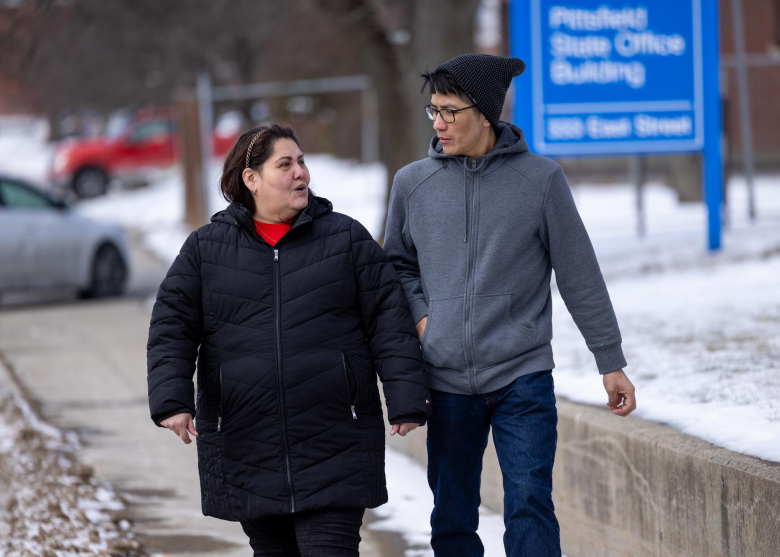
Maria Menaca, one of the community navigators at Central Berkshire Habitat, accompanies Jose to the DMV to take a driving test. Navigating local bureaucracies can be difficult for non-English speaking residents. Community navigators can translate in important settings such as this.
“We’ve seen a complete shift from people feeling very shut off to people asking for help and searching for resources.”— Tonya Frazier, Central Berkshire Habitat’s lead community navigator
Habitat’s community navigator model has spread throughout Pittsfield, with more than 40 agencies and local organizations employing their own versions of community navigators.
Strengthening the community through resident-led revitalization
Residents are encouraged by the progress they’ve seen in the neighborhood and the way the community has rallied together to improve the quality of life in Westside. “It makes me shed happy tears to see the change that Habitat and the residents have brought to this community,” says Tonya, who lives in Westside with her husband and children. “It gives you an extra bounce in your step to be in the Westside.”
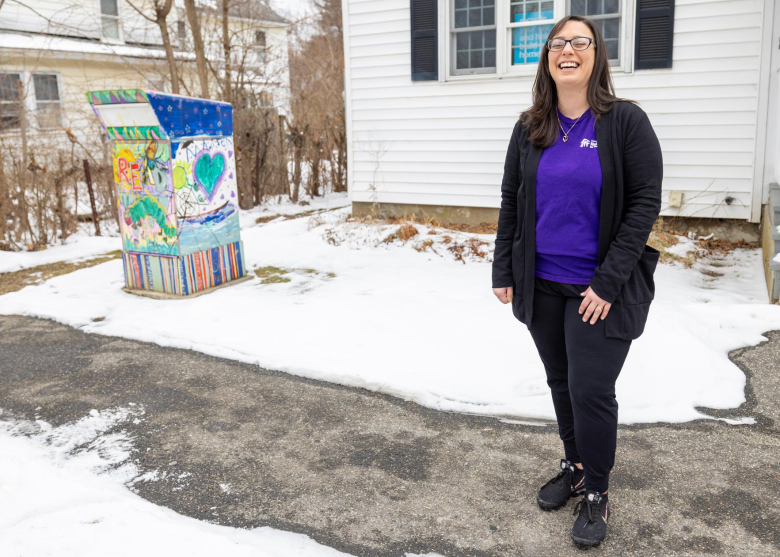
Tonya Frazier poses for a portrait next to the little book library on Columbus Ave.
In Westside and communities across the U.S., Habitat affiliates are partnering with residents to implement neighborhood revitalization projects and inspire lasting community-wide change. “We’re considered community developers now,” Carolyn says. “At the end of the day, that’s the legacy we want to have. It’s about how we have helped change the entire community based on what the community wants.”
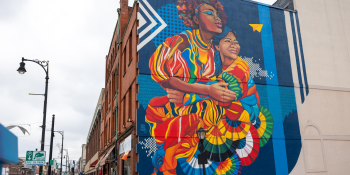
Habitat and residents forge legacy of change in Massachusetts community
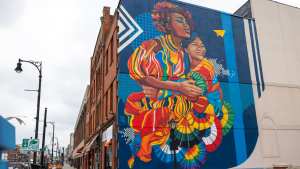
HFH of Wicomico County ReStore- Fruitland
HFH of Waldo County ReStore
Collegiate Challenge Bonanza at the Beach
College students teamed up with a South Carolina Habitat affiliate for Bonanza at the Beach, a Collegiate Challenge build that proved to be a powerful and productive event for all involved.
Volunteerism is foundational for Habitat for Humanity, drawing individuals from diverse backgrounds and ages to contribute to its mission. Among them is Erica Johnson, a 21-year-old senior at North Central College in Naperville, Illinois, and president of the community service student organization Breakaway.
Johnson has led Breakaway for several years and coordinates service experiences annually outside of Illinois with various community partners. This year, Johnson and Breakaway’s student executive board sought a new community partner and contacted Habitat for Humanity’s Collegiate Challenge program.
Collegiate Challenge provides year-round alternative school break volunteer opportunities to college students across the United States. Through the program, student volunteers work with Habitat to ensure every family has a safe and affordable place to call home and witness their own potential for making an impact.
Accepting the challenge
After exploring various Collegiate Challenge opportunities, Johnson eventually met Jacob Rigopoulos, director of operations at Habitat Georgetown. Rigopoulos recognized the need to create a Collegiate Challenge event to help his affiliate mobilize more youth volunteers to complete several large service projects that required additional labor. The resulting Bonanza at the Beach experience would prove to be the perfect fit for the Breakaway group.
Rigopoulos noted, “There was such a demand ... We thought it would be an awesome opportunity to work on projects that could use more volunteer power.”
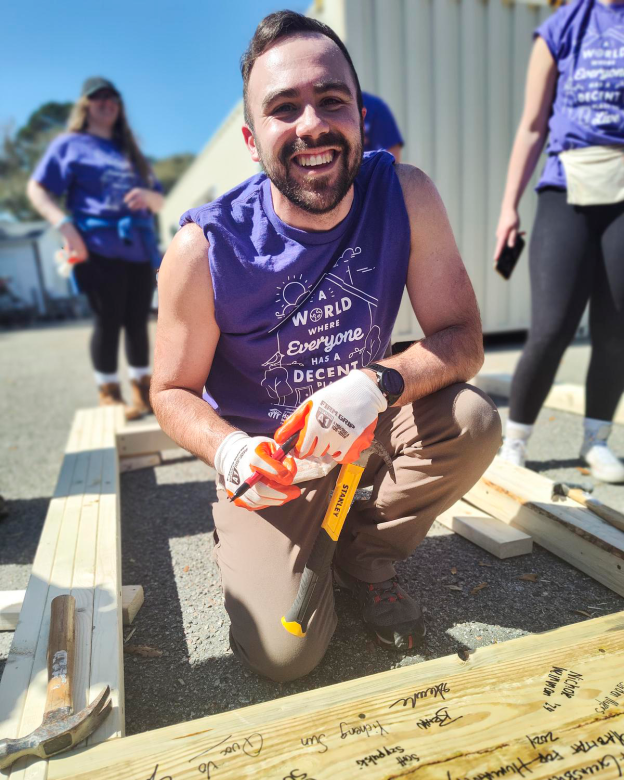
Thus, Bonanza at the Beach was conceived, aptly named for its location between Myrtle Beach and Charleston along the South Carolina coast. This event promised to be a true service bonanza, with multiple schools converging on the city, simultaneously pooling their efforts to help Habitat Georgetown in the ReStore, on the build site and with neighborhood cleanup in the West End neighborhood.
Collegiate Challenge brought together the University of New England, North Central College, the University of Pittsburgh-Greensburg and Eastern Connecticut State University for Habitat Georgetown’s event, totaling 61 student volunteers.
Putting the work in
The participants first worked at the local Habitat ReStore with a staff member, Wendy. Dividing into groups, students from various schools transformed sections of the store into inviting showrooms for the store’s patrons. Particularly noteworthy was their creation of a book section complete with a homemade sign featuring a quote from Jane Austen, adding a delightful literary charm to the space.
Transitioning to the build site days later, Johnson and other students constructed windowsills and a shed for a home. Speaking of the experience, she said, “People spend all of this time doing this work, and it’s not easy to do, so to see that we could volunteer our time … was really impactful.”
It changed my mindset even more about how necessary Habitat is ... how important it is that volunteers go everywhere in the U.S. and not just stay local.— Erica Johnson, president of student service organization Breakaway
Johnson and her peers also worked on the West End Community Garden, helping to clean up and prepare for planting. Amid their service, they engaged in social media challenges orchestrated by Habitat Georgetown’s development director, Liz. Competing daily, students crafted content showcasing their experiences, vying for Habitat swag and expanding awareness of Habitat’s mission.
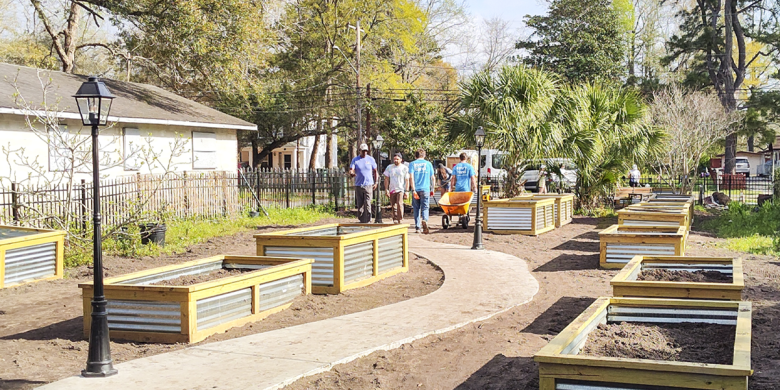
As their service drew to a close, students gathered for a low country meal at the local Moose Lodge, savoring shrimp boil and engaging in games like cornhole and horseshoes. Amidst the festivities, moments of reflection surfaced. When prompted by Habitat Georgetown to share their thoughts, both volunteers and staff came forward.
“Five or six different students … talked about how great it was to collaborate with the other schools and see other students doing the same thing they were…it was just absolutely mind-blowing. And on top of all that, the quietest person at our affiliate…got on the microphone and gave a very emotional inspirational speech to all the kids, thanking them for coming down. And it’s just seeing that spread, the joy between the affiliate, the [Collegiate Challenge] volunteers and the regular volunteers … it was awesome,” said Rigopoulos.
Continuing connections
Johnson’s group returned home at the end of the service deeply impacted. Beyond social media, Johnson forged meaningful connections during her experience. No longer a newcomer to Habitat for Humanity, she decided to do a research project on Habitat for one of her classes. Viewing Habitat as a potential long-term community partner for her student group of around 150, she has considered making Collegiate Challenge Breakaway’s official out-of-state service experience. Beyond the club, she has even thought about Habitat playing a role in her future career in some capacity.
Volunteers like the Breakaway group, along with dedicated staff, embody the spirit of Collegiate Challenge and fuel its success. Reflecting on the event, Jacob envisions expanding it in the future and encourages creativity among affiliates who want to do something similar.
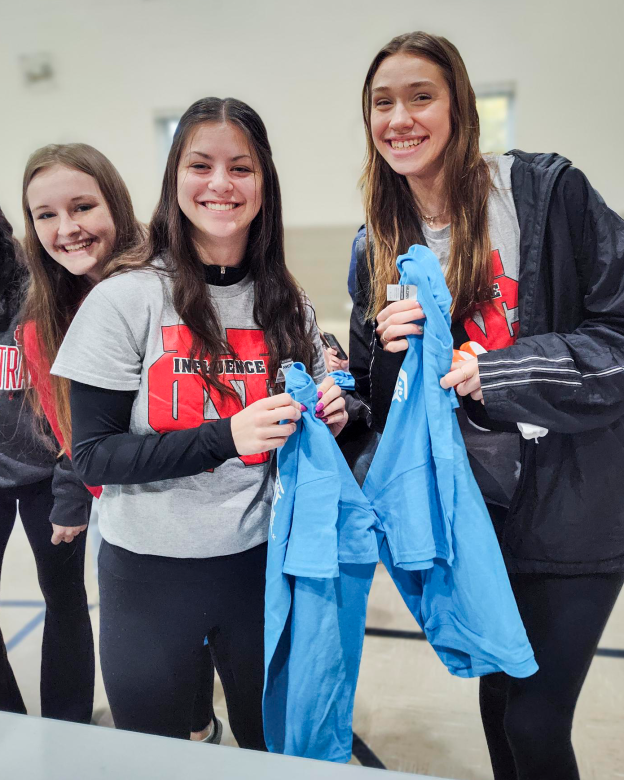
“Every affiliate can showcase different program aspects and utilize available resources. Focus on upcoming programs needing extra help. It’s not just random volunteers; they know about Habitat and are willing to work. Tap into that willingness. Don’t be afraid to be creative and add some extra elements, like a mid-event party.”
In the world of service and community, the Collegiate Challenge service opportunities hosted by Habitat for Humanity Georgetown stand as a beacon of hope and empowerment for the next generation of volunteers. As youth like Johnson and leaders like Rigopoulos weave their experiences into the fabric of change, they leave a lasting mark on their communities and beyond.
To learn more about planning your own Collegiate Challenge experience, please reach out to [email protected] or visit the Collegiate Challenge page.
Collegiate Challenge trip applications now open
Search for available student volunteer opportunities and learn how to apply!
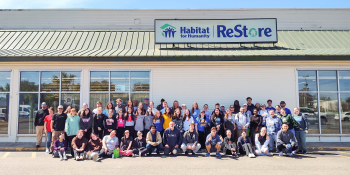
Bonanza at the Beach
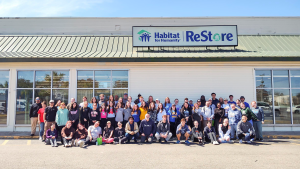
Henkel and Habitat for Humanity International expand partnership
Habitat for Humanity International Colorado Consumer Privacy Statement
Wells Fargo Foundation awards $6.3 million to support build, repair projects across the U.S. with Habitat for Humanity
Good energy: A community builds resiliency with solar power in Puerto Rico
Habitat’s capacity building program in Puerto Rico, funded by AbbVie, helped support the development of a solar-powered energy hub that provides a safe place where families can shelter during weather-related emergencies.
A solar-powered energy hub provides a safe place for families to charge their electrical devices and store medicine during weather-related emergencies in Puerto Rico. The energy hub is located at Parceleras Afrocaribeñas para Transformación Barrial’s La Conde, a community-centered space that serves Saint Just, San Antón and Los Mirtos.
Led by an intergenerational group of local Afro-Caribbean women, Parceleras Afrocaribeñas provides cultural, recreational, artistic and business opportunities that support equity and social justice for local Black communities. It is one of five organizations that participated in Habitat for Humanity’s capacity building program, designed to help community-based organizations in Puerto Rico increase their ability to help mitigate weather-related risks and minimize vulnerabilities in their communities.
Working together to create good energy
After hurricanes Irma and Maria caused widespread devastation across Puerto Rico in 2017, AbbVie became Habitat’s leading partner in reconstruction efforts on the island, committing US$50 million to Habitat to help families recover and rebuild. As part of that support, the capacity building program was generously funded by the research-based pharmaceutical company.
Habitat Puerto Rico CEO Amanda Silva says that working with local organizations like Parceleras Afrocaribeñas that have the “knowledge and the respect of their communities” has been integral to the development of unique solutions that help even more families build resiliency against future weather-related disasters.
“Community-based organizations are able to identify vulnerabilities and achieve concrete results and address their community’s particular needs,” Amanda says.
Habitat’s holistic hurricane recovery program has also supported home repairs and new construction, securing land tenure, long-term improvement to shelter and land resilience issues, and workforce development programming on the island.
An action plan for resiliency
“Participating in the capacity building program was an opportunity to think more deeply about how our organization can best respond to community needs in a sustainable way, especially during weather emergencies like hurricanes,” says Mapenzi Chibale Nonó, co-founder of Parceleras Afrocaribeñas para Transformación Barrial.
Habitat’s capacity building program adapts PASSA, a community participatory model developed by the Red Cross, for use in Puerto Rico via a web-based toolkit, Construir en Communidad. Utilized by community organizations to develop risk-reduction projects, the toolkit includes explanatory videos and techniques for effective community meetings and activities, guides to increase the safety of homes against natural hazards, and more.
With the toolkit as a guide, Parceleras Afrocaribeñas developed the action plan for the energy hub in response to power outages affecting the local community. Power outages during storms have become a common occurrence for residents in Puerto Rico, especially after Hurricane Maria.
“In moments of energetic collapse, many people in our community didn’t have anywhere to go to charge their devices and equipment to alleviate the stress that not having electricity obviously causes,” says Mapenzi.
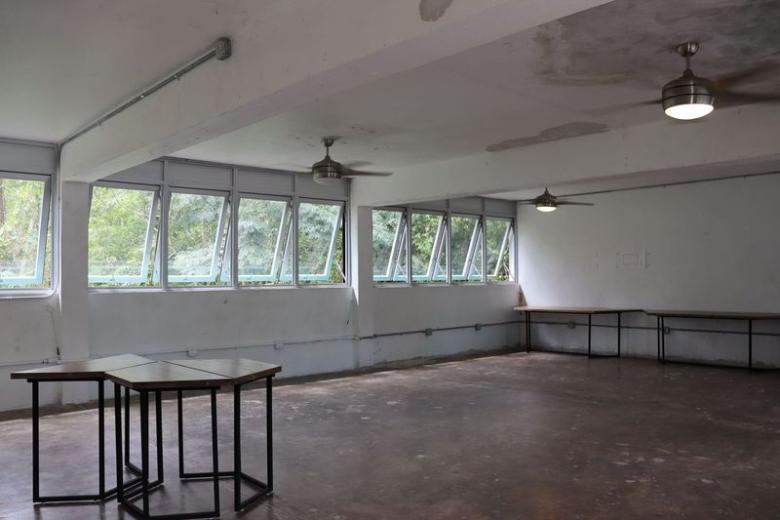
During storms, local families can shelter safely inside the energy hub to charge their electrical devices and store medicine.
A safe place to shelter
Parceleras Afrocaribeñas received a US$20,000 grant from Habitat to help make their plan for the energy hub a reality. The solar-powered hub includes safety windows and doors that help it function as a shelter during storms, and it will include a refrigerator to store medicine.
“Because of its security windows and doors, storm shutters, solar energy and elevation, it is an important safe space in our community in response to hurricane season,” Mapenzi says.
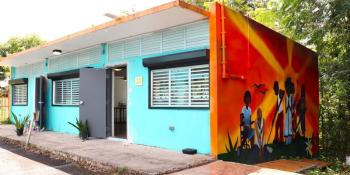
Good energy: A community builds resiliency with solar power in Puerto Rico
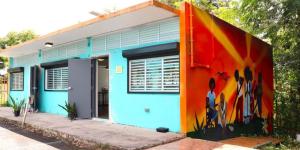
Habitat Capital Language Assistance Policy
The purpose of this Language Access Plan is to make reasonable efforts to eliminate or reduce limited English proficiency as a barrier to accessing Habitat Capital’s products and services.


